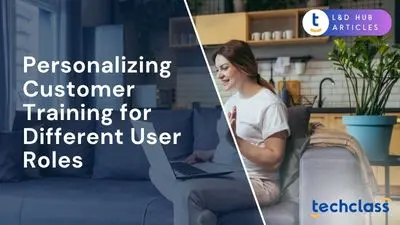
Mobile devices have become ubiquitous in our work and personal lives, but successful mobile learning is about more than just technology. It hinges on human factors – the motivation of learners, how our memory works, and maintaining momentum in learning. Companies in all industries are embracing mobile-based training to upskill employees on the go. Yet, even the best mobile learning platform can fall flat if it doesn’t engage people, fail to help them retain knowledge, or cannot sustain long-term participation. In this article, we explore the human side of mobile learning by examining three critical elements: motivation, memory, and momentum. We’ll also provide practical tips to implement an effective mobile learning program in an enterprise setting. By understanding these human factors, HR professionals and business leaders can design mobile learning initiatives that truly resonate with employees and deliver lasting results.
For any training program to succeed, learners must feel motivated and invested. Employee motivation is especially crucial in voluntary learning scenarios, if training feels like a chore, participation will lag. One powerful insight for HR leaders is that providing opportunities for growth is a key motivator. In fact, lack of learning and development is often cited as the number one reason employees quit their jobs, even ahead of salary. Offering mobile learning opportunities can directly address this need by empowering staff to grow their skills anywhere, anytime.
Mobile learning aligns well with what today’s workforce wants. Studies have shown that a vast majority of employees appreciate the flexibility of learning on their personal devices. In one survey, 72% of employees said they felt more motivated to learn when training was delivered via mobile. This isn’t surprising – mobile platforms let people access training at the moment of need or during natural downtimes (like a commute or lunch break), rather than forcing them into rigid classroom schedules. The convenience and autonomy of mobile learning tap into intrinsic motivators: employees can drive their own development at their preferred pace. When workers feel in control of when and how they learn, their engagement and willingness to participate increases.
Mobile learning can also boost extrinsic motivation through engaging design. Many mobile training apps incorporate gamification elements, points, badges, quizzes, and friendly competitions, which make learning feel more like a rewarding challenge than an obligation. These features trigger dopamine hits and a sense of achievement that encourage learners to come back. For example, Google reportedly saw an 80% improvement in learner engagement after introducing gamified, interactive training modules in their employee development programs. By making training fun and rewarding, mobile platforms can capture employees’ attention in ways traditional methods often can’t.
Another motivator is the clear linkage between learning and career growth. Mobile learning content can be personalized to each employee’s role and goals, showing them a direct path to improving performance or advancing their career. When staff see how a short module on their phone helps them solve a work problem or earn a new skill certificate, they’re more motivated to complete it. This sense of immediate relevance and application keeps adult learners interested. In the bigger picture, companies benefit too, highly motivated learners tend to be more productive and are less likely to leave. A well-known finding by LinkedIn is that 94% of employees would stay at a company longer if it invested in their learning and development. In summary, motivation is the foundation: mobile learning thrives when it connects with employees’ personal drivers, whether that’s convenience, enjoyment, recognition, or career ambition.
Motivation might get learners through the virtual door, but memory and retention determine whether training has a lasting impact. After all, training that isn’t remembered won’t translate into improved job performance. Unfortunately, humans are prone to forgetting new information quickly, a phenomenon famously illustrated by the forgetting curve. Research indicates that people forget roughly 50% of new information within an hour, and up to 70% by the next day if there’s no attempt to reinforce or apply that knowledge. This poses a major challenge for corporate training: busy employees may complete a course, but without reinforcement, much of that knowledge could fade before they ever use it on the job.
Mobile learning offers unique advantages for combating the forgetting curve and enhancing memory retention. One key strategy is microlearning, which delivers content in bite-sized chunks (often just a few minutes long). Instead of dumping a dense 50-page manual on employees, a mobile microlearning approach might present a concept via a 3-minute video or an interactive quiz. Breaking training into digestible pieces respects the brain’s limited capacity and short attention span. Learners can focus better and absorb information one step at a time. Just as importantly, micro lessons can be revisited easily. When training is always accessible on a smartphone, employees can quickly review past modules or key points right before they need to apply them, reinforcing their memory at critical moments.
Another powerful technique enabled by mobile platforms is spaced repetition. Spaced repetition means scheduling learning interactions over time – for example, sending a quick refresher quiz a few days after an initial lesson, and another one a week later. This approach leverages how our memory works: each time we recall or use information, the memory trace becomes stronger and the rate of forgetting slows down. Mobile learning systems can automate these spaced reviews through push notifications or daily mini-drills, seamlessly integrating them into the employee’s routine. By regularly exercising the memory on important topics, mobile training helps transfer knowledge from short-term memory into long-term memory. A well-known research statistic underscores this benefit: e-learning (including mobile learning) can boost knowledge retention rates by up to 25–60%, whereas traditional in-person training typically yields retention rates of only 8–10%. In corporate terms, that means a higher return on investment for training, because employees actually remember and apply what they learned.
There are real-world examples of improved retention through mobile learning. Companies that have implemented mobile microlearning report significant gains in how much employees remember and later use. For instance, organizations leveraging mobile learning have seen measurable improvements, one study noted a 35% increase in knowledge retention when moving from conventional training to a mobile-first microlearning approach. These outcomes make sense: a short quiz on your phone every few days can keep important information fresh, whereas a single long seminar might be forgotten in a week. By aligning training design with the realities of human memory, mobile learning ensures that lessons stick. In practice, this means employees are more prepared to perform tasks correctly, follow procedures, or recall product knowledge when it counts. Ultimately, focusing on memory in mobile learning design protects the company’s training investment and helps turn learning into sustained workplace performance.
Motivation gets learners started and memory techniques help them retain knowledge, the next challenge is maintaining momentum. Momentum in learning refers to building a continuous learning habit and keeping learners engaged over the long term. In an enterprise context, you want employees not just to complete one module, but to keep coming back for more learning opportunities, steadily building their skills. This sustained engagement is what turns one-off training into a true continuous learning culture.
Mobile learning is particularly well-suited to nurturing momentum. One reason is that it fits naturally into the flow of daily life and work. Consider that the average person checks their smartphone dozens of times a day. By delivering training through a device that employees already constantly interact with, companies can weave learning into employees’ routines with minimal friction. For example, a sales associate might receive a 2-minute daily sales tip via a mobile app each morning, or an engineer might get a weekly challenge question notification. These small touches keep learning on the radar. Over time, such regular engagement creates a self-sustaining cycle, learners start to anticipate and look forward to new mini-lessons or challenges as part of their work week. In essence, learning becomes a habit rather than a rare event.
Another way mobile platforms support momentum is through their interactive and social features. Many mobile learning solutions include elements like community forums, leaderboards, or the ability to easily share progress. These features create a sense of ongoing community and friendly competition that can spur people to continue learning. For instance, seeing colleagues earn points or badges for completing courses can inspire others to log in and catch up. Healthy competition aside, a mobile learning app that allows comments or discussion can keep learners connected and exchanging knowledge even after they finish a module, extending the learning experience. When employees feel part of an active learning community, they are more likely to keep participating rather than drop off after one course.
Crucially, maintaining momentum also involves showing learners that their efforts are leading somewhere. Enterprises can leverage mobile learning data to provide personalized recommendations, for example, after finishing an introductory course, the app suggests an intermediate module next, or provides feedback on how the new skills can be applied on the job. This personalized, just-in-time guidance keeps the momentum by guiding learners on a clear development path. It prevents the “what now?” effect after one training is done. Leaders can also celebrate continuous learning, such as acknowledging employees who complete monthly learning challenges or sharing success stories of skills learned via mobile training leading to real successes at work.
From a strategic perspective, momentum in learning has never been more important. The modern business environment is evolving rapidly, and new skills are constantly required. It’s estimated that about half of all employees will need reskilling or upskilling by 2025 to meet changing job requirements. This means companies must foster an environment of ongoing learning, not one-and-done training sessions. Mobile learning provides the ideal vehicle for this due to its flexibility and frequency. When done right, it helps employees keep their skills sharp and continuously grow, without overwhelming them. An example from industry: a large retail company that introduced mobile learning for its frontline staff saw a 40% increase in employee participation in training programs – employees engaged more regularly with learning because it was easy to do in short bursts. In another case, a global corporation that moved to mobile-based learning saw training engagement rates jump and maintained high levels month after month, indicating that employees didn’t just try the mobile courses once and abandon them, but actually built a habit around them. These stories illustrate momentum in action. By meeting learners where they are (on their phones) and nurturing a positive, ongoing learning experience, mobile learning programs can keep up the tempo long after the initial kickoff.
Designing a mobile learning program with human factors in mind is essential, but how can organizations put this into practice? Whether you’re in HR, L&D, or an enterprise leadership role, consider the following practical tips when implementing mobile learning for your workforce:
By following these implementation tips, enterprises can create a mobile learning experience that not only leverages modern technology but also respects the human dynamics of learning. The result will be a program that is user-friendly, engaging, and effective in building new skills across the organization.
As we’ve seen, the effectiveness of mobile learning in an enterprise setting boils down to human elements – engaging hearts and minds, not just delivering content. Motivation, memory, and momentum work together as a kind of virtuous cycle. First, you capture employees’ interest and drive to learn (motivation). Then you present the training in a way that they can absorb and retain (memory). Finally, you keep them coming back and growing continually (momentum). When all three are addressed, mobile learning becomes a powerful tool that can transform workforce development. Employees will feel empowered to learn on their own terms, remember more of what they learn, and develop a habit of continuous improvement.
For HR professionals and business leaders, the take-home message is to always design learning initiatives with the human side in mind. It’s easy to be dazzled by the latest learning app features or the promise of cutting-edge AI-driven content, but technology should serve human learning behavior, not the other way around. That means selecting solutions and strategies that fit naturally into employees’ lives and cognitive patterns. The payoff is well worth it: a well-executed mobile learning program can lead to a more skilled, agile, and engaged workforce. It can improve performance on the job and also boost employee satisfaction and retention, as people feel supported in their growth.
In closing, mobile learning represents a convergence of modern technology with timeless truths about how humans learn best. By prioritizing learner motivation, enhancing memory retention, and sustaining momentum, organizations can build training programs that truly resonate with their people. The result is not only better training metrics, but a stronger company culture of learning and innovation. When you put people first in your mobile learning strategy, you create an environment where both employees and the business have the opportunity to continually adapt and thrive in a changing world.
Motivation drives employee engagement, improves participation, and links learning to career growth, making training more effective.
Microlearning delivers bite-sized content that is easy to focus on and revisit, helping reinforce knowledge and combat the forgetting curve.
Interactive features, social engagement, personalized progress, and regular notifications help keep learners motivated and committed over time.
By identifying employee needs, designing engaging short content, incorporating gamification, choosing user-friendly platforms, and fostering a learning culture.
Focusing on motivation, memory, and momentum ensures training resonates with learners, improving retention, engagement, and long-term development.


